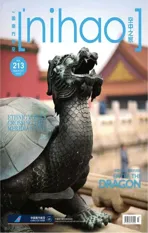Guardians of Imperial Mausoleums
2017-04-10XuChao,Leo,Nanjing等
Guardians of Imperial Mausoleums
The practice of placing stone animals in front of tombs or mausoleums dates back to the Western Han Dynasty (206 BC–24 AD), when Emperor Wudi (156-87 BC) ordered that some animal sculptures be created and placed by stonemasons in front of the tomb of Huo Qubing (140–117 BC), a distinguished military general who died prematurely, in recognition of his great military exploits. The Xiaoling Mausoleum of the Ming dynasty (1368-1644 AD) in Nanjing also follows the tradition, though in a very unique way.
帝王陵寝的守护者
在墓前放置石兽的做法最早出现在汉代的霍去病墓,汉武帝为表彰其远击匈奴的赫赫战功,命石匠凿刻了一批动物形象置于墓前,以示威仪。南京的明孝陵也沿用了这一制度,然其博采众长、自成一格。
Text by Xu Chao Translation by Leo Photo provided by Nanjing Publicity Department Illustrations by Zhang Haolun
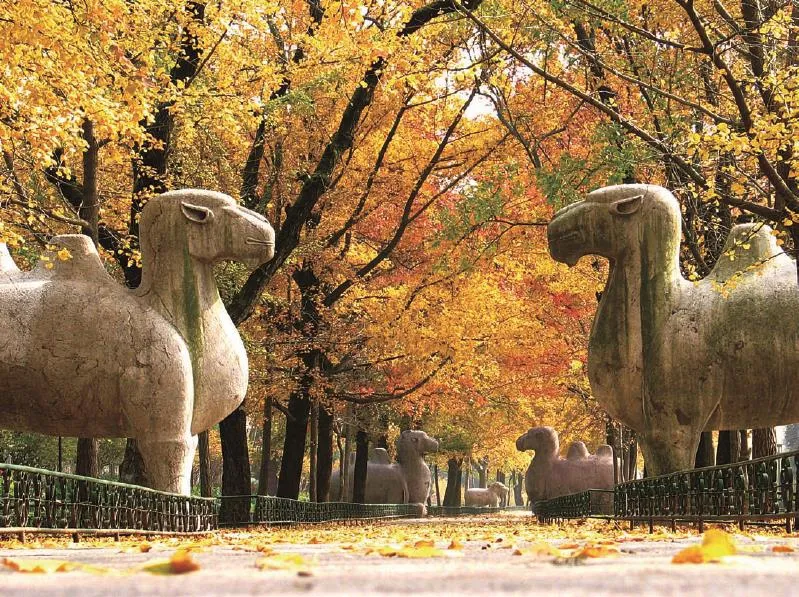
The Xiaoling Mausoleum contains the tomb of Emperor Zhu Yuanzhang, founder of the Ming Dynasty, and Empress Ma. The 600-year-old tomb features a Sacred Way lined with 12 pairs of stone animals, which feature six different species of animal. Each species comes in two pairs, one in a standing position and the other on their knees.明孝陵是明代开国皇帝朱元璋和马皇后的合葬陵,距今有600余年历史。陵前列置石兽6种,每种两对,一立一卧。
石狮——权力象征
狮乃百兽之王,《封氏闻见记》中曾说石狮“表饰坟垄,如生前之象仪卫耳”,可以辟邪镇墓。帝陵前列置石狮从唐朝的乾陵之始成为定制,此后的帝陵均沿用这一仪制,以彰显帝王至高无上的权力。
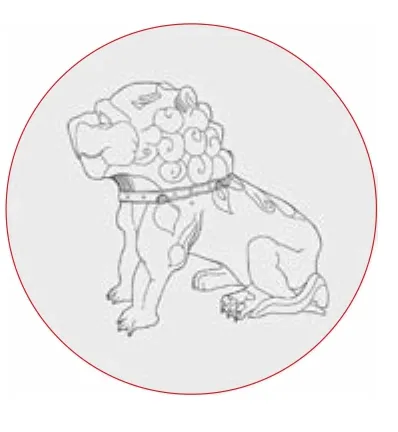
Stone lion: a symbol of power
The lion is the king of all animals. Even stone lions, when placed near tombs, have long been known to be able to keep evil spirits at bay, according to Chinese historical records. The tradition of having stone lions built in front of imperial tombs or mausoleums started with the Qianling Mausoleum, which is the joint tomb of Emperor Gaozong of the Tang Dynasty (618-907) and Wu Zetian, the only ruling Empress of Imperial China. The tradition has since been strictly observed in succeeding dynasties to manifest the absolute power and dignity of emperors.
獬豸——任法神兽
獬豸乃是“一角之羊”,《宋书·符瑞志》中说:“獬豸知曲直,狱讼平则至。”由此可见,獬豸是以任法兽的形象出现的,用以表彰执法者的公正不阿。

Xiezhi: a symbol of justice
Xiezhi is a one-horned mythical creature that is believed to be able to separate the innocent from the guilty. Therefore, stone Xiezhi were built in front of tombs to recognise the impartiality of the deceased in law
enforcement.
骆驼——万邦来朝
骆驼来自西域,并非中原产物。在明孝陵之前的帝王陵寝中未有列置骆驼的先例,这实乃明孝陵的首创。
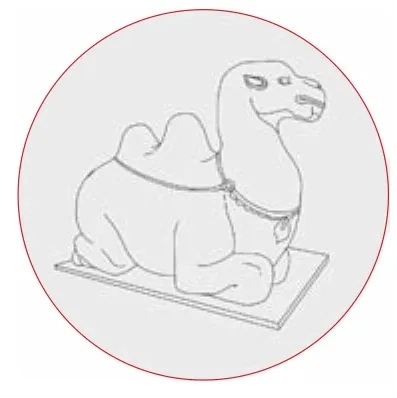
Camel: an animal from an exotic land
Camels were originally brought from Western Lands to China's central plains. Before the Ming Dynasty, no imperial tombs or mausoleums contained stone camels, and the Xiaoling Mausoleum was the fi rst of its kind.
石象——导引辨路
象是帝王大驾卤薄的一部分,《明史·仪卫》中说帝王的仪仗队伍中有“虎、豹各二,驯象六,分左右”。象作为帝王卤薄的一员,在汉代就已有之,《宋会要》中写道:“汉卤薄象最在前,晋作大车架之以试桥梁。”可见象是为帝王导引前路,以辨路之虚实的。
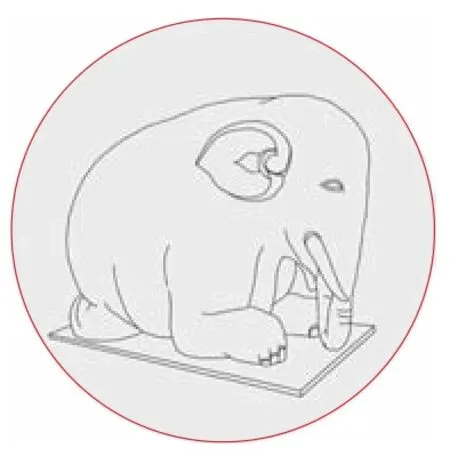
Elephant: a trusted guide
Elephants used to be an important part of the imperial honour guard in Imperial China. This role of the elephant dates back to as early as the Han Dynasty. According to the chapter about the guard of honour of the History of Ming Dynasty, the honour guard of Ming emperors included two tigers, two leopards, and six tamed elephants, which proceeded in two lines. Their practical role, according to historical records, was to guide the procession of an emperor for the sake of safety.
麒麟—— 辟邪瑞兽
麒麟“王者至仁,则出”。南朝诸陵前皆置麒麟,人臣陵前则只能置辟邪,以示帝王威严。唐宋则以石狮代替麒麟,作为帝陵的象征。明孝陵神道两者皆有,可谓兼采南北、集前朝陵寝之大成。

Qilin: a symbol of benevolence
Qilin (or Chinese unicorn), a mythical creature, was thought to only appear in lands with a benevolent ruler. In the Southern Song Dynasty, all of which took Jiankang (today's Nanjing) as the capital except for short periods of time, imperial tombs or mausoleums all came with stone qilins as opposed to the tombs of imperial court offi cials, which could only have Bixie, another mythical creature, as a guardian. By Tang and Song Dynasties, the stone lion had completely replaced Qilin as a symbol of imperial majesty. The Xiaoling Mausoleum, however, has both stone lions and Qilins.
石马 —— 表彰战功
马是天子仪仗的一部分,同时也是古代必不可少的战备物资之一。《左传》中说:“国之大事,在祀与戎。”

Horse: a symbol recognising military exploits
The Horse was also an essential part of the imperial honour guard as well as of wars in ancient China. As the Zuo Zhuan or Commentary of Zuo recounts, “The paramount of all state affairs are worship and military.”
